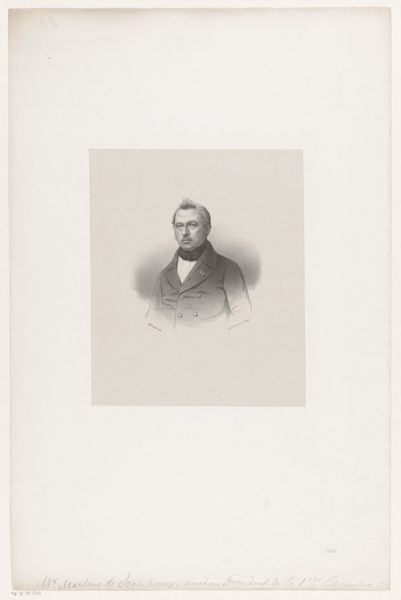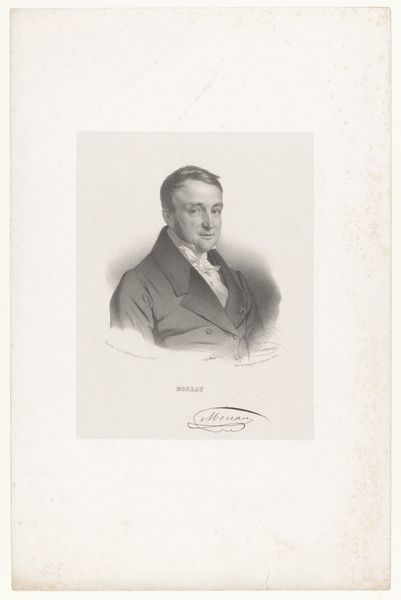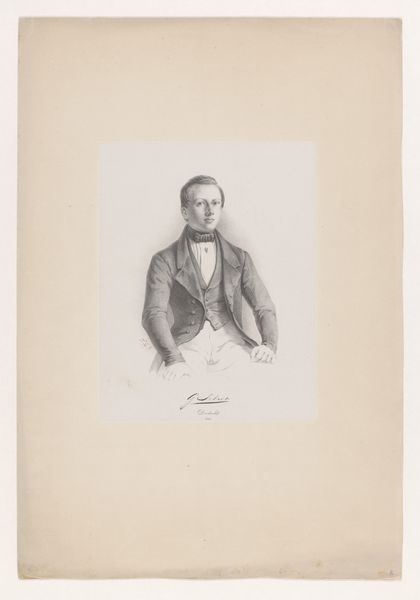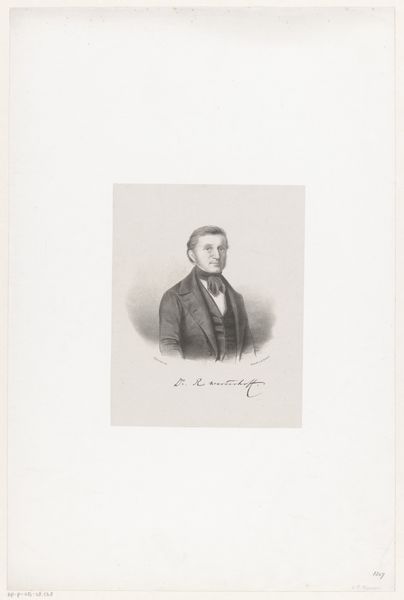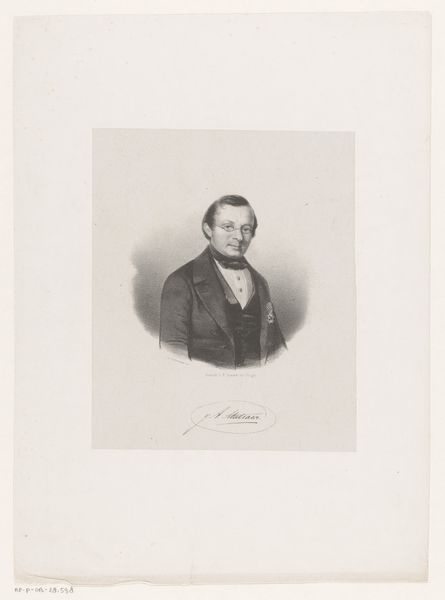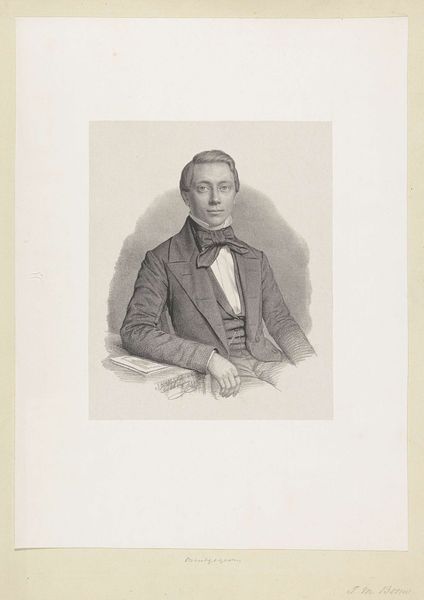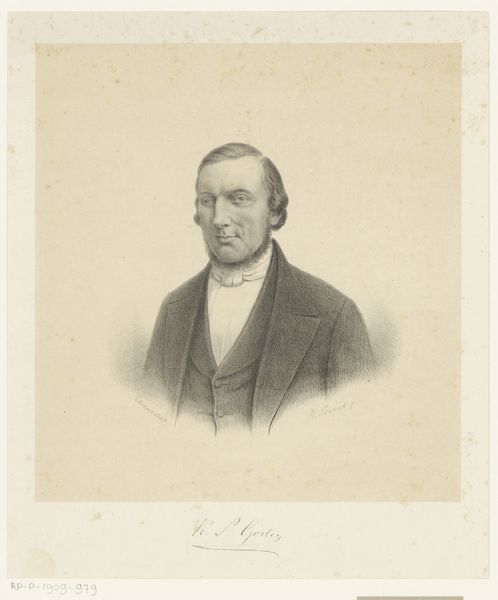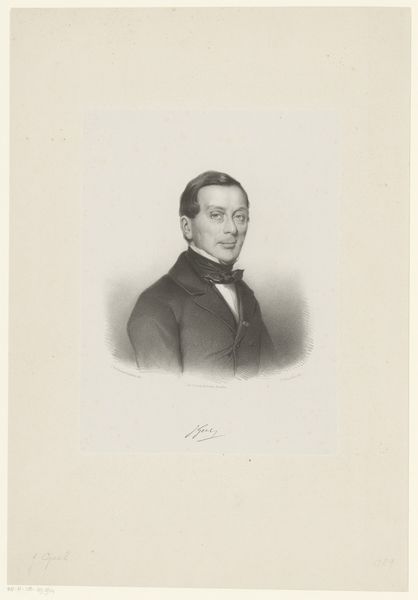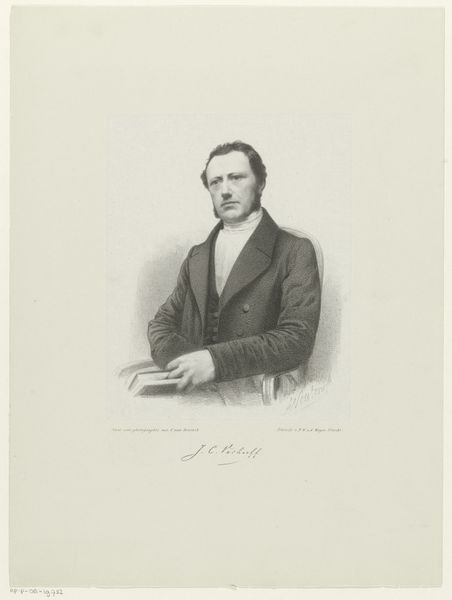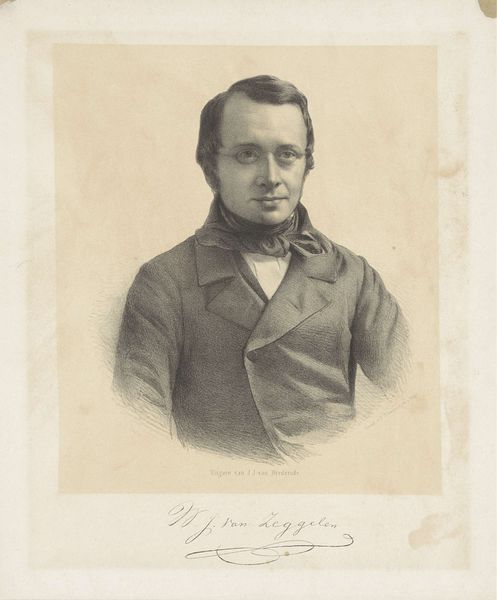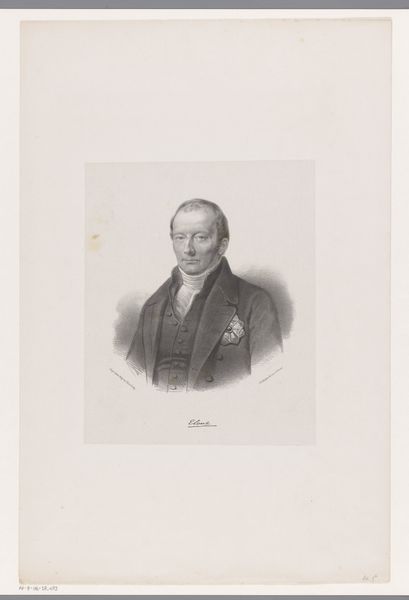
Dimensions: height 397 mm, width 285 mm
Copyright: Rijks Museum: Open Domain
Editor: Here we have a graphite drawing, *Portret van een onbekende man, mogelijk H.G. Oofw*, dating from 1850 to 1893, by Isaac Wilhelm Tegner. It strikes me as quite a formal portrait. What social context might inform our reading of this man's image? Curator: It’s crucial to consider who had access to portraiture at this time and how it functioned within societal hierarchies. This was long before the age of photography democratized image-making. Commissioning a portrait, even a drawing, reinforced the subject’s status, perhaps hinting at professional standing or aspiration for upward mobility. The sitter’s severe expression adds to this image. How might societal pressures regarding masculinity play into that? Editor: I see your point. His solemnity seems performative, doesn't it? It’s as if he is presenting an image of a respectable citizen. What impact did the institution of portraiture itself have on defining societal roles? Curator: Absolutely. Portraits, displayed in homes or public institutions, visually cemented power structures. By carefully controlling their image, sitters affirmed existing social norms or subtly negotiated their position within them. This controlled performance reinforced societal expectations. Did portraiture contribute to or challenge social mobility, then? Editor: I now see that even in a drawing like this, the choice of pose and medium all reinforce societal roles. Thanks for shedding some light! Curator: It's fascinating how seemingly simple images reflect and shape social structures. A fruitful exploration.
Comments
No comments
Be the first to comment and join the conversation on the ultimate creative platform.
